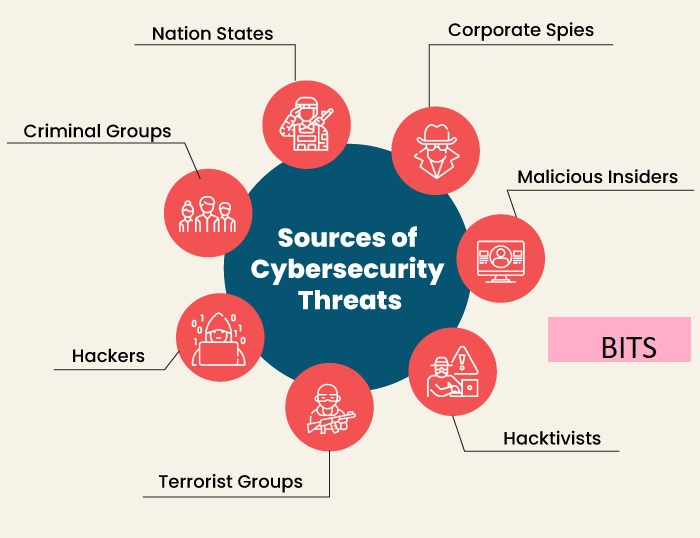Vulnerability
A vulnerability refers to a known weakness of an asset that can be exploited by one or more attackers. In other words, it is an unknown issue that allows an attack to be successful. For example, when a team member resigns, and you forget it disable their access to external accounts change logins or remove their names from the company credit cards. This leaves your business open to both unintentional and intentional threats. However, most vulnerabilities are exploited by automated trackers and on a human typing on the other side of the network.
Next testing for vulnerabilities is critical to ensuring the continued security of your systems by identifying weak points and developing a strategy to respond quickly. Here are some questions that you ask when determining your security vulnerabilities. So, you may have questions like is your data backed up and stored in a secure offsite location, is your data stored in the cloud. If yes, how exactly is it being protected from cloud vulnerabilities? What kind of security do you have to determine? Who can access modify or delete information from within your organisation? what kind of antivirus protection is the news, what the licence currents are the licence current and is it running as often as needed also do you have a data recovery plan in the event of vulnerability being exploited. So, these are the normal questions that one asks when checking their vulnerability.
For cyber security related issues of businesses please visit: https://www.benchmarkitservices.com/cyber-security/
Threats
For Data security related issues of businesses please visit: https://www.benchmarkitservices.com/backup/
Next up is threat. A threat refers to a new or newly discovered incident with potential to do harm to a system or your overall organisation. There are three main types of threats, they are natural threats like floods or tornadoes unintentional threats such as employee mis takingly accessing the wrong information and intentional threats there are many examples of intentional threats including spyware, malware, adware companies or the actions of disgruntled employees. In addition, worms and viruses are categorised as threats because they could potentially cause harm to your organisation through exposure to an automated attack as opposed to one perpetrated by human beings. Although these threats are generally outside of one’s control and difficult to identify in advance. It is essential to take appropriate measures to assess threats regularly. Here are some ways to do so. Ensure that your team members are staying informed of current trends in cybersecurity so they can quickly identify new threats.
Risks
Next on the list, we have risk. Risk refers to the potential for loss or damage when a threat exploits a vulnerability. Examples of risks include financial losses as a result of business disruption, loss of privacy, reputational damage, legal implications and can even include loss of life. Risk can also be defined as follows which is basically a threat multiplied by the vulnerability. You can reduce the potential for risk by creating and implementing a risk management plan and here are the key aspects to consider when developing your risk management strategy. Firstly, we need to assess risk and determine needs when it comes to designing and implementing a risk assessment framework. It is critical to prioritise the most important breaches that need to be addressed. Although frequency may differ in each organisation this level of assessment must be done on a regular recurring basis. Next, we also must include a total stakeholder perspective. Stakeholders include the business owners as well as employees, customers, uneven vendors. All these players have the potential to negatively impact the organisation but at the same time they can be assets in helping to mitigate risk. So, as we see risk management is the key to cybersecurity.
For cloud-based solutions for the businesses like Google, AWS, and Azure please visit: https://www.benchmarkitservices.com/google-cloud-service-providers/
Let us go through a scenario to understand how cybersecurity defend an organisation against very manipulative cybercrime. So, the cybercrime as we all know is a global problem that is been dominating the news cycle. It poses a threat to individual security an even bigger threat to large international companies, banks and government. Most companies have prevented them security software to stop these types of attacks but no matter how secure we are, it is going to happen to meet.
Let us see an example of Rob. Rob is a chief security officer for a company that makes a mobile app to help customers track and manage their finances. So, security is up top priority, so Rob’s company has an activity response platform in place that automates cybersecurity process. The ARP software integrates all the security and ID software needed to keep a large company like Robs secured into single dashboard and acts as a hub for the people processes and technology needed to respond to and contain cyber-attack. Let us see how this platform works in the case of a security breach while bob is out on a business trip, irregular activity outdoors on his account as a user behaviour analysis ending that monitors account activity recognises suspicious behaviour involving late night logins and unusual amounts of data being downloaded. This piece of software is the first signal that something is wrong, and alert is sent to the next use of software in the chain which is the security information and event management system. Now the ARP, a chain of events that ultimately prevents the company from encountering a serious security disaster. The ARP connects to a user directory software that Robs company uses which immediately recognises the user accounts belong to an executive who is out on a business trip and then proceeds to lock his account.
The ARP sends the incident IP address to a threat intelligence software that identifies the address as a suspected malware server. As each piece of security software runs the findings are recorded in the ARP’s incident which is already busy creating a set of instructions called a playbook for a security analyst to follow. The analyst then locks Rob’s accounts and changes his passwords. The signs the software has determined the attempted attack came from a well-known cybercrime organisation using stolen credentials. Robs credentials were stolen when the hacker found a vulnerability in his company’s firewall software and used it to upload a malware-infected file. Now that we know how that add happened to analyst uses the ARP and identifies and patches all the things. The ARP uses information from endpoint tool to determine which machines need to be patched recommends helping patch them and then allows the analyst to push the batches to all the computers and mobile devices instantly. Meanwhile, Rob must alert the legal department of the breach and the ARP instantly notifies the correct person of the situation and the status of the incident after the attack is contained and Rob’s account is secured. The analyst then communicates which data may have been stolen or compromised during the incident. He identifies which geographies jurisdictions regulatory agencies cover the users and information affected by the attack. Then the ARP creates a series of tasks so the organisation can notify the affected parties and follow all relevant compliances and liability procedures. In the past, the security breach this large would have required Rob’s company to involve several agencies and third parties to solve the problem a process that could have taken months or longer. Now it is easier and efficient due to cyber security software.
To purchase any IT related software or hardware please visit: https://www.xtechbuy.com/




